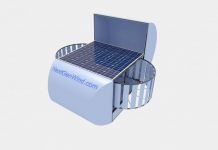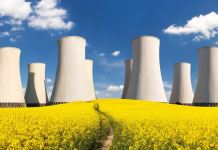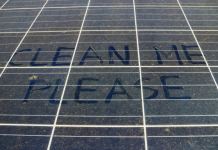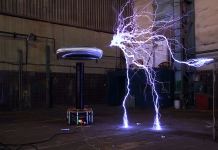To date, no class of cables that are used directly in the wind industry. The main characteristics of the cable used in this area is its long service life, resistance to torsion and rupture and other mechanical parameters.
Cable are designed for aerial power lines, though reliable and durable, you still do not experience those loads which occur with use in wind turbines.
Cable for use in wind power plants must meet a number of requirements, here are three of them:
– due to the fact that you need to pass a lot of voltage the current from the live cores shall be a large cross section;
– cable should be well to transfer the load in torsion. Since the operation of wind turbines depend on the flow of the wind, the wind is guided to the air flow and rotates around its axis, what would be the best to catch him. You need to pay special attention to how the cable carries the load torsion at low temperatures (down to-40º), because the wind turbine is installed outdoors.
– cables must withstand the impact of transmission oils. Over time, the wind turbine need to replace oil, and if cable can not withstand this impact, then it is unsafe for staff. Due to the fact that in the nacelle of the wind turbine may cause a fire, you need to use such materials to minimize the possibility of poisoning by combustion products. To this end, the shell is made of a compound which is halogen free. But such a cable is very expensive.
It is obvious that the cables are known constructions do not meet the requirements of operating conditions in wind power installations over the entire lifetime, and their imminent replacement at one time or another is a costly event. The design and specification of cables should minimize operating costs throughout the service life. But such a period must be at least 25 – 30 years. To ensure that the characteristics of the power cables, there are special projects that deal with the problems and study of ageing exclusively with of cables for the wind industry.
The most suitable materials for these conditions is a cable polyethylene and polyvinyl chloride compounds. They fit most requirements and cheaper than other shells.
These two samples were subjected to the tests according to these criteria:
– resistance to oils;
– resistance to twisting in the temperature range from -40 to +70º;
fire safety;
– in fire, smoke density;
– resistance when exposed to corrosive gases;
– reaction on heating to 90º.
Results of the tests came to the conclusion that:
1. Mechanical properties of cable with a PVC sheath not suitable for use due to the presence of a pronounced aging of the material. This impacts directly on the service life of the cable.
2. The polyethylene sheath of the cable showed better results than PVC, so the cable with polyethylene sheath are a good option for use in wind turbines.























